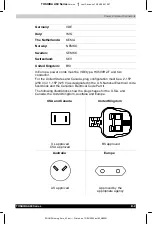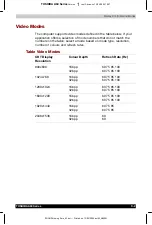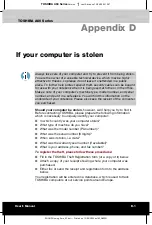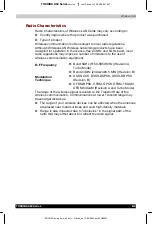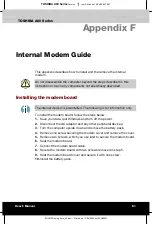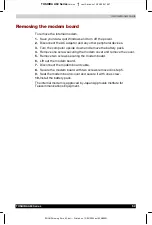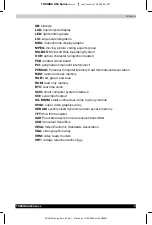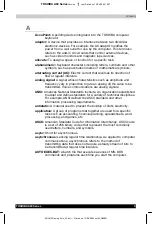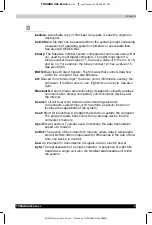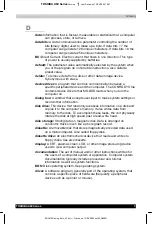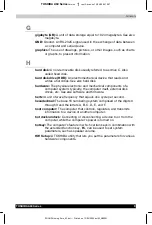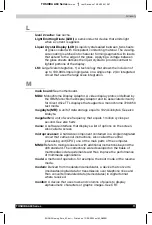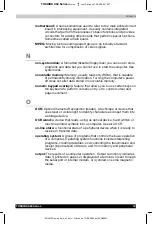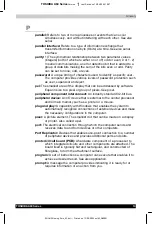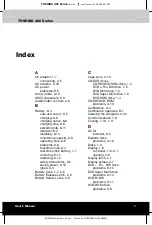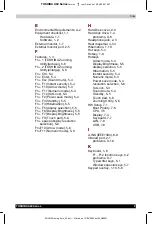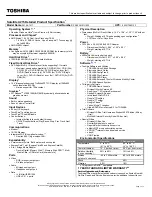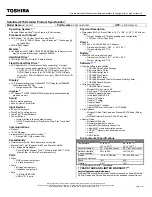
Glossary
TOSHIBA A60 Series
3
TOSHIBA A60 Series
Version
1
Last Saved on 13/05/2004 10:37
ENGLISH using Euro_M.dot –– Printed on 13/05/2004 as IM_A60EN
A
AccuPoint:
A pointing device integrated into the TOSHIBA computer
keyboard.
adaptor:
A device that provides an interface between two dissimilar
electronic devices. For example, the AC adaptor modifies the
power from a wall outlet for use by the computer. This term also
refers to the add-in circuit cards that control external devices,
such as video monitors and magnetic tape devices.
allocate:
To assign a space or function for a specific task.
alphanumeric:
Keyboard characters including letters, numbers and other
symbols, such as punctuation marks or mathematical symbols.
alternating current
(AC):
Electric current that reverses its direction of
flow at regular intervals.
analog signal:
A signal whose characteristics such as amplitude and
frequency vary in proportion to (are an analog of) the value to be
transmitted. Voice communications are analog signals.
ANSI:
American National Standards Institute. An organization established
to adopt and define standards for a variety of technical disciplines.
For example, ANSI defined the ASCII standard and other
information processing requirements.
antistatic:
A material used to prevent the buildup of static electricity.
application:
A group of programs that together are used for a specific
task such as accounting, financial planning, spreadsheets, word
processing, and games, etc.
ASCII:
American Standard Code for Information Interchange. ASCII code
is a set of 256 binary codes that represent the most commonly
used letters, numbers, and symbols.
async
: Short for asynchronous.
asynchronous:
Lacking regular time relationship. As applied to computer
communications, asynchronous refers to the method of
transmitting data that does not require a steady stream of bits to
be transmitted at regular time intervals.
AUTOEXEC.BAT:
A batch file that executes a series of MS-DOS
commands and programs each time you start the computer.

